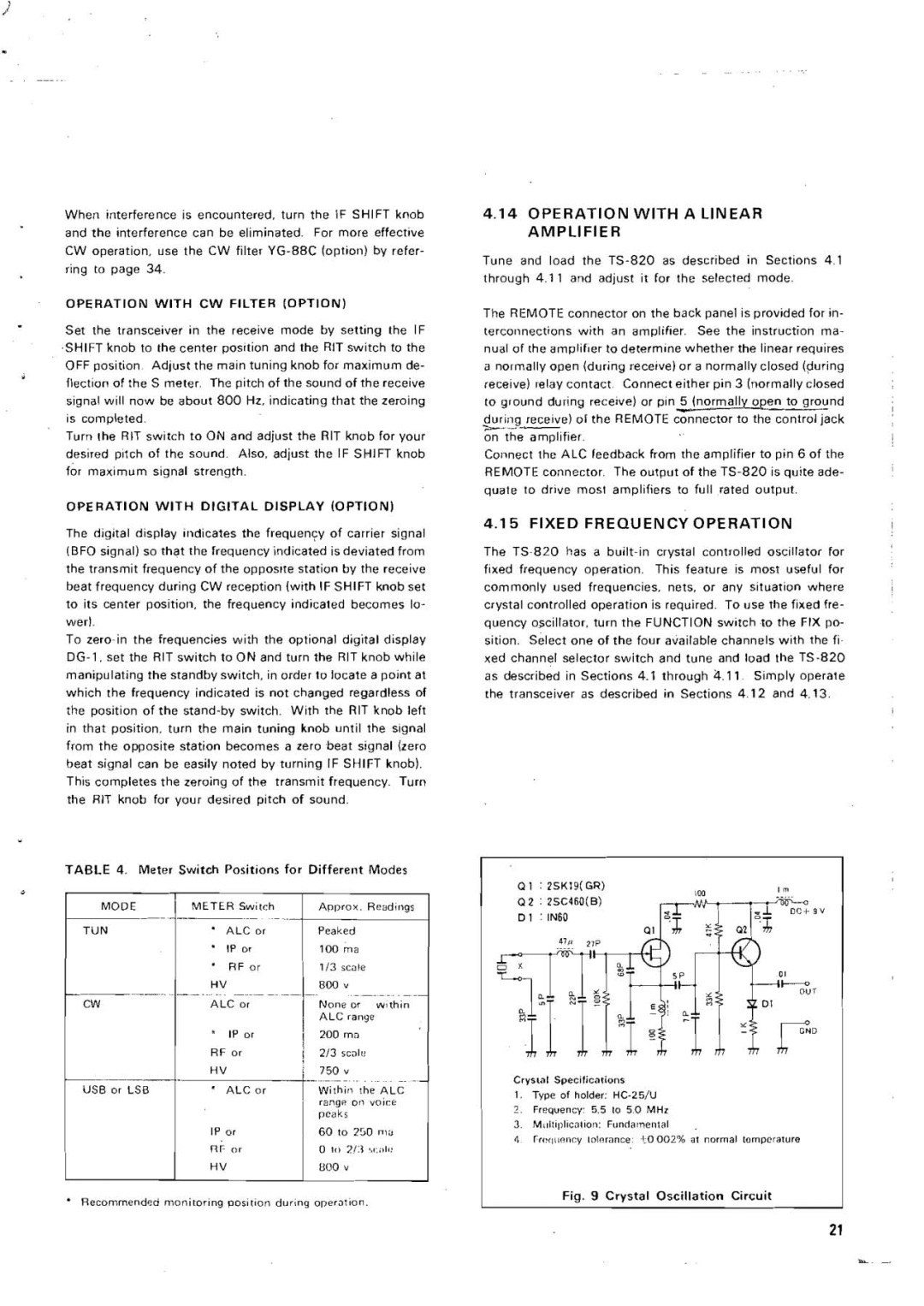TS-820 specifications
The Kenwood TS-820 is a high-performance amateur radio transceiver known for its exceptional features and technologies that cater to both novice and experienced operators. This rig, part of Kenwood's renowned TS series, has become a popular choice for those seeking reliability and versatility in their communication equipment.One of the defining characteristics of the TS-820 is its dual-conversion superheterodyne receiver architecture. This design minimizes interference and provides improved performance across various amateur radio bands. With coverage from 160 meters to 10 meters, the TS-820 is capable of operating on all major HF amateur bands, making it an excellent choice for diverse communication purposes.
In terms of power, the TS-820 delivers a solid output of 100 watts, ensuring that operators can make their presence known across the airwaves. The rig features a built-in automatic antenna tuner, which simplifies the setup process by matching the transmitter to various antenna types. This feature not only enhances signal clarity but also maximizes the station's efficiency.
Another standout feature of the TS-820 is its extensive digital signal processing (DSP) capabilities. The advanced filtering options help to eliminate noise and interference, allowing users to hear weaker signals more clearly and effectively. The IF filter selections can be adjusted to optimize reception under varying conditions, showcasing the rig's adaptability.
The user interface of the TS-820 is designed for both ease of use and functionality. The large, backlit display provides critical information at a glance, while the rotary controls offer tactile feedback, allowing operators to make precise adjustments quickly. Additionally, the rig supports various modes of operation, including SSB, CW, and RTTY, accommodating a wide range of communication preferences.
Built with durability in mind, the TS-820 utilizes high-quality components and construction techniques that ensure long-term reliability. Its rugged design can withstand the rigors of everyday use, making it a trustworthy companion for any amateur radio enthusiast.
In summary, the Kenwood TS-820 is a versatile and reliable amateur radio transceiver that stands out due to its superior performance, advanced technologies, and user-friendly features. With its robust design and comprehensive capabilities, the TS-820 continues to earn its place as a respected choice among ham radio operators around the world. Whether engaged in casual conversation or competitive contesting, enthusiasts can rely on the TS-820 for a satisfying and immersive amateur radio experience.

